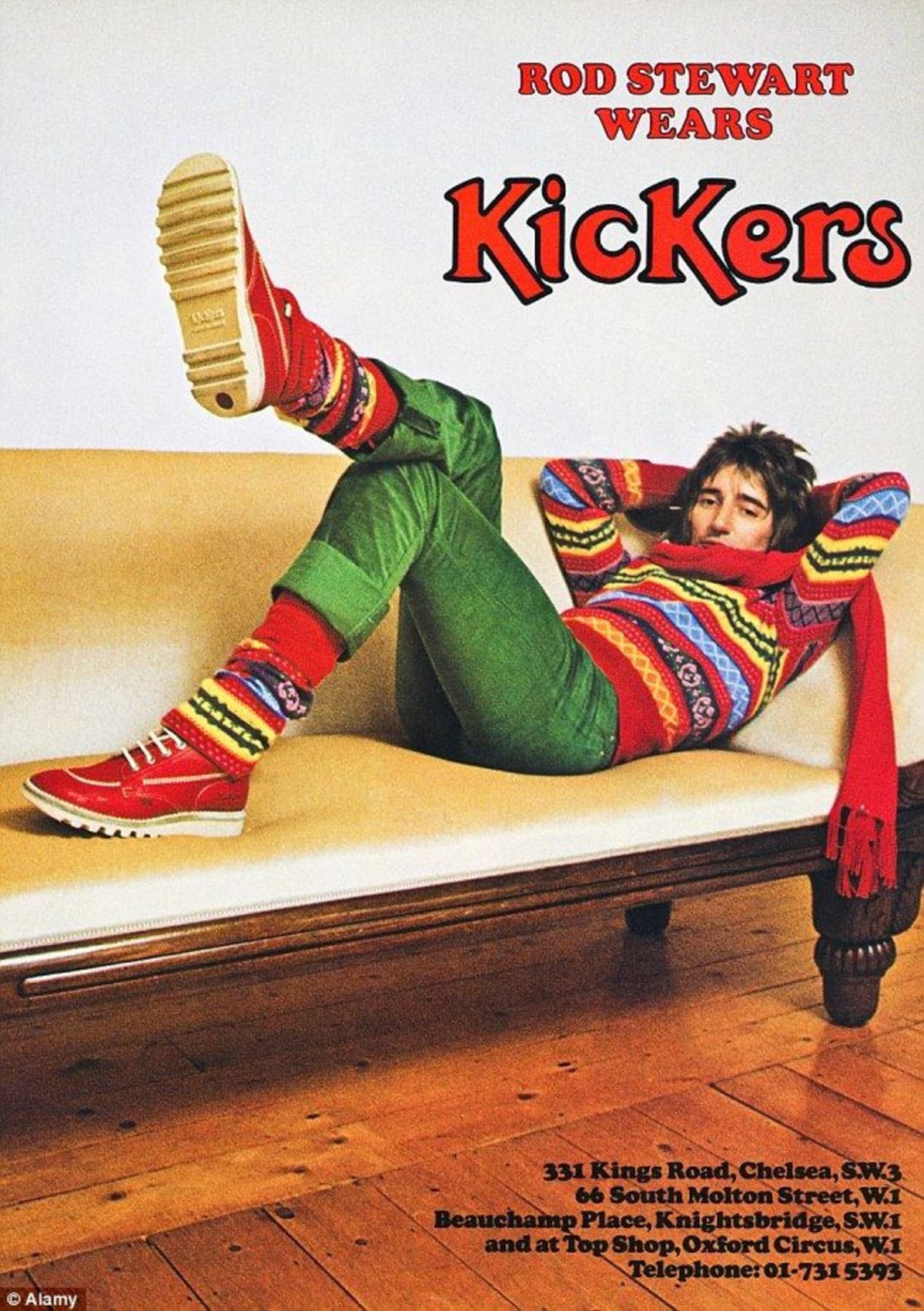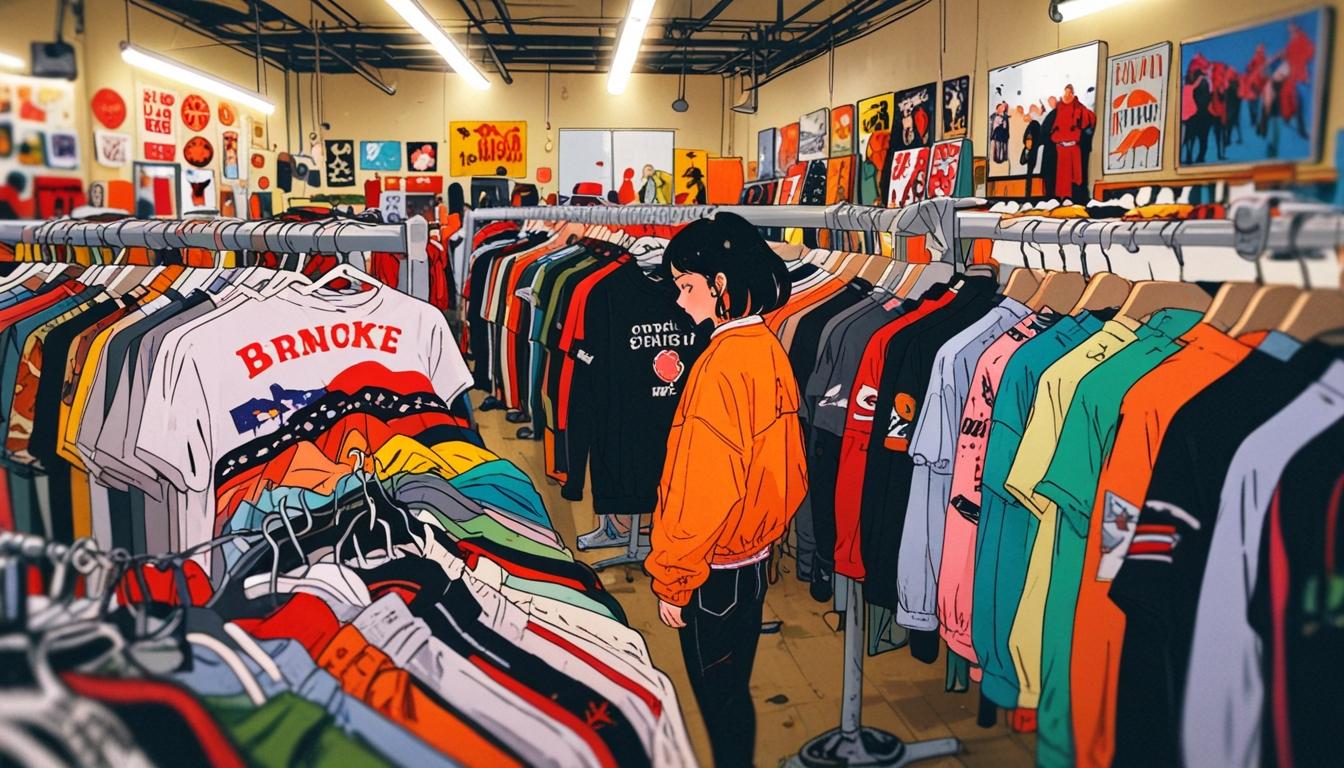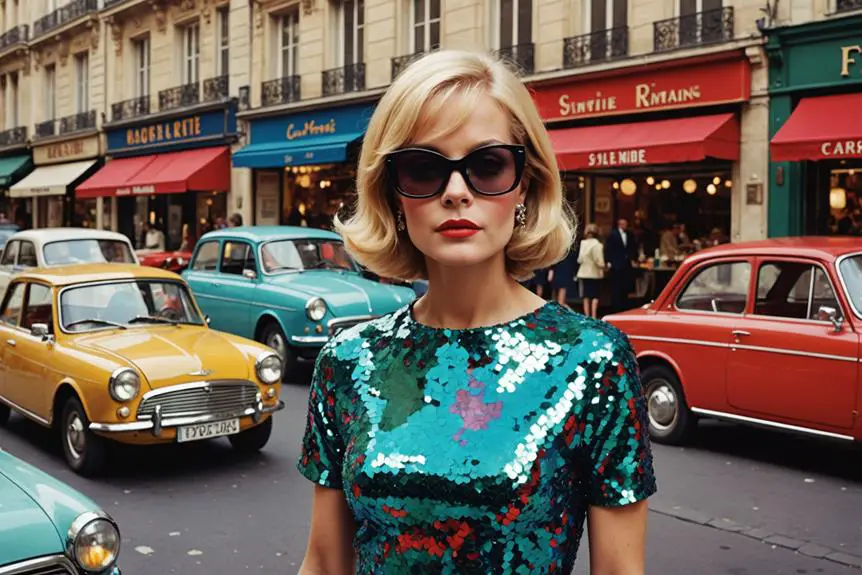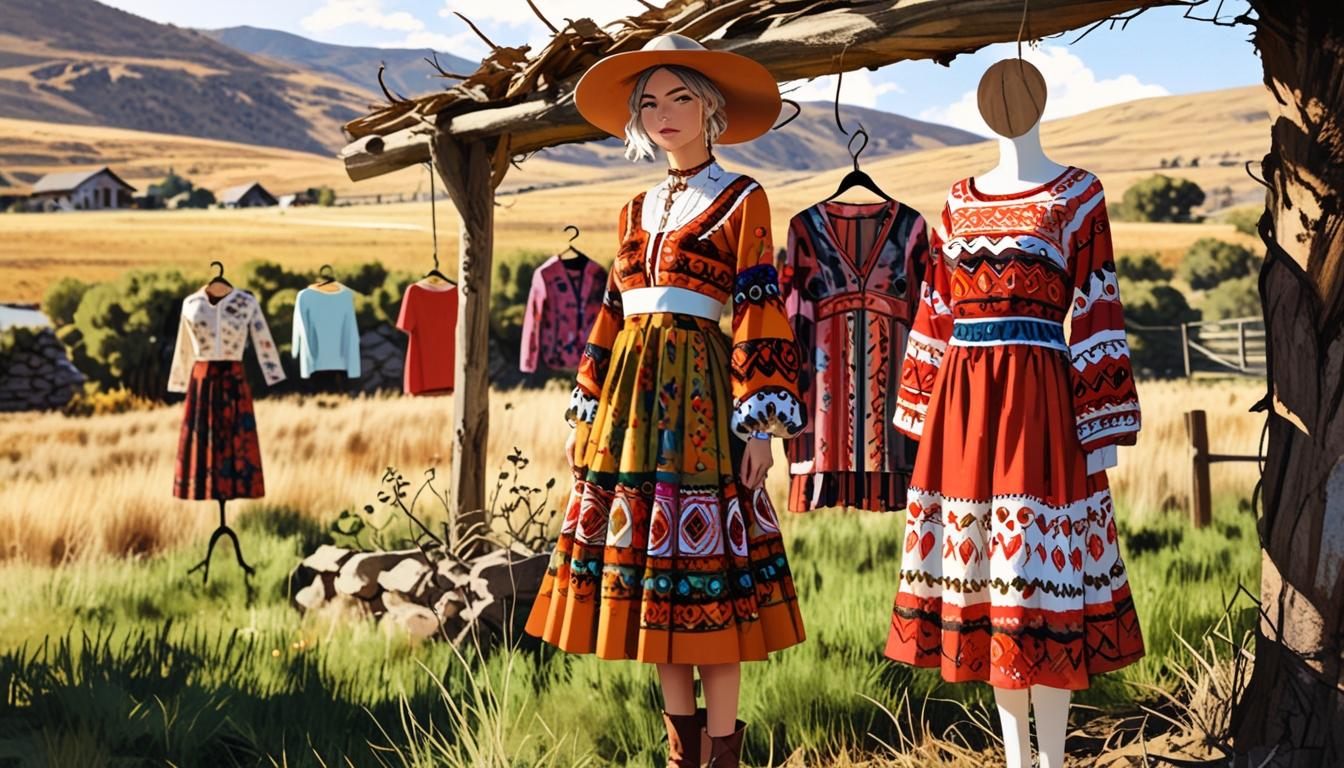Kickers, a brand that has been synonymous with youthful spirit, iconic style, and creative footwear for over 50 years. Born in the imaginative streets of Paris in the 1970s, Kickers was inspired by the carefree, barefoot energy of the musical Hair. This unique cultural phenomenon captured the imagination of Daniel Raufast, who envisioned a new kind of shoe for the “blue-jean” generation—a shoe that would unite the spirit of denim with durable, stylish footwear. Thus, he enlisted the talented designer Jacques Chevallareau to bring this vision to life, resulting in the creation of the first jean boot and launching a global phenomenon.
The concept was groundbreaking: short, boot-like shoes made with nubuck leather and tough natural rubber soles, adorned with contrast stitching, eyelets, and appliqués referencing denim culture. The result was a playful, functional design that spoke directly to the hearts of the young, adventurous generation, leading to explosive growth. Within one season, production skyrocketed from 300 pairs to 12,000 per month. Kickers quickly transcended borders, becoming a staple in over 70 countries by 1974.
As we roll through the decades, we see how Kickers shaped subcultures and movements across generations. In the 1980s, the brand gained traction in Britain, becoming an essential part of the “Perry Boy” look with the Stone Roses and the Manchester music scene, while in the 1990s, Kickers bright red boots defied strict no-trainer policies at The Haçienda, leaving an indelible mark on the rave and Britpop movements. The iconic Kick Hi boot became a statement of rebellion and creativity for artists from Ian Brown to Jarvis Cocker.
Today, Kickers continues to build on its heritage while evolving with new styles and collaborations, all while staying true to its roots of community, unity, and creativity. From its earliest days, the brand has stood for the collective, inviting everyone to “tighten their laces” and embark on life with spirit and tenacity. So lace up and join us as we dive deeper into the colorful history of this timeless brand and explore how Kickers grew from an idea inspired by Hair into a global phenomenon that connects generations through fashion.
Classic MTV Kickers Advert
How to tell if Kickers is vintage from the logo
The Kickers brand, known for its distinctive shoes and casual footwear, has maintained a consistent yet evolving brand image through its recognizable logo over the years. Rooted in the spirit of 1970s Parisian youth culture, Kickers’ logo stands out with its playful lettering and strong identity, serving as a hallmark of quality and style. Understanding the changes in its logo over the years provides a unique insight into Kickers’ legacy and how they adapted to appeal to different generations.
While the brand has retained its core visual identity throughout its history, subtle modifications have occurred in the logo to reflect changing design trends and branding needs. Let’s delve into how the Kickers logo has transformed from its earlier forms to its current iteration. We’ll explore the primary characteristics of the logo used from the 1980s to now.
1980s to now Kickers logo
- The logo features playful, bold lettering with each letter capitalized except for the “i” and “e”.
- The distinctive “cK” ligature is a unique element, giving the logo a dynamic, youthful flair.
- The color scheme, typically white text on a red background, has remained a consistent hallmark of the brand.
- The registered trademark symbol (®) is often placed at the upper right corner of the logo, ensuring brand authenticity.
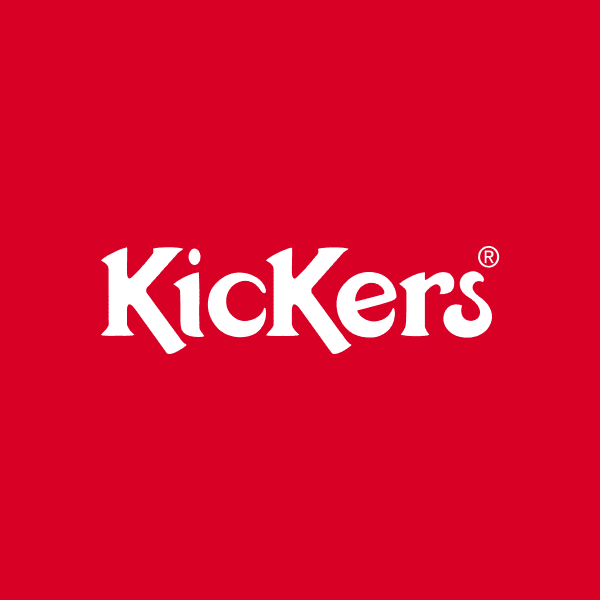
1980s to now Kickers logo
How to tell if Kickers is vintage from the tags
Kickers has a long-standing history in the footwear and apparel industry, dating back to its founding in the 1970s. Recognized for its bold colors and distinct logo, the brand’s tags have evolved significantly over the decades. Whether showcasing the vibrant “Classics” series or more modern designs, Kickers tags provide a glimpse into the company’s storied past and stylistic transformations.
Understanding the variations in these tags can help collectors, enthusiasts, and fashion historians identify and date vintage Kickers garments. From the eye-catching red-green “Classics” labels to the more contemporary iterations, here’s a comprehensive guide to help distinguish Kickers tags across different eras.
Need help with vintage tags or labels? Submit a picture on our vintage tag identification page, and we’ll assist you!
1990s vintage Kickers tags
- Distinctive “Kickers” branding with vibrant red, green, and blue color schemes.
- Includes tags marked “est. 1970,” often in square designs.
- Some tags pair the “Kickers” logo with size labels like “XL” or “S.”
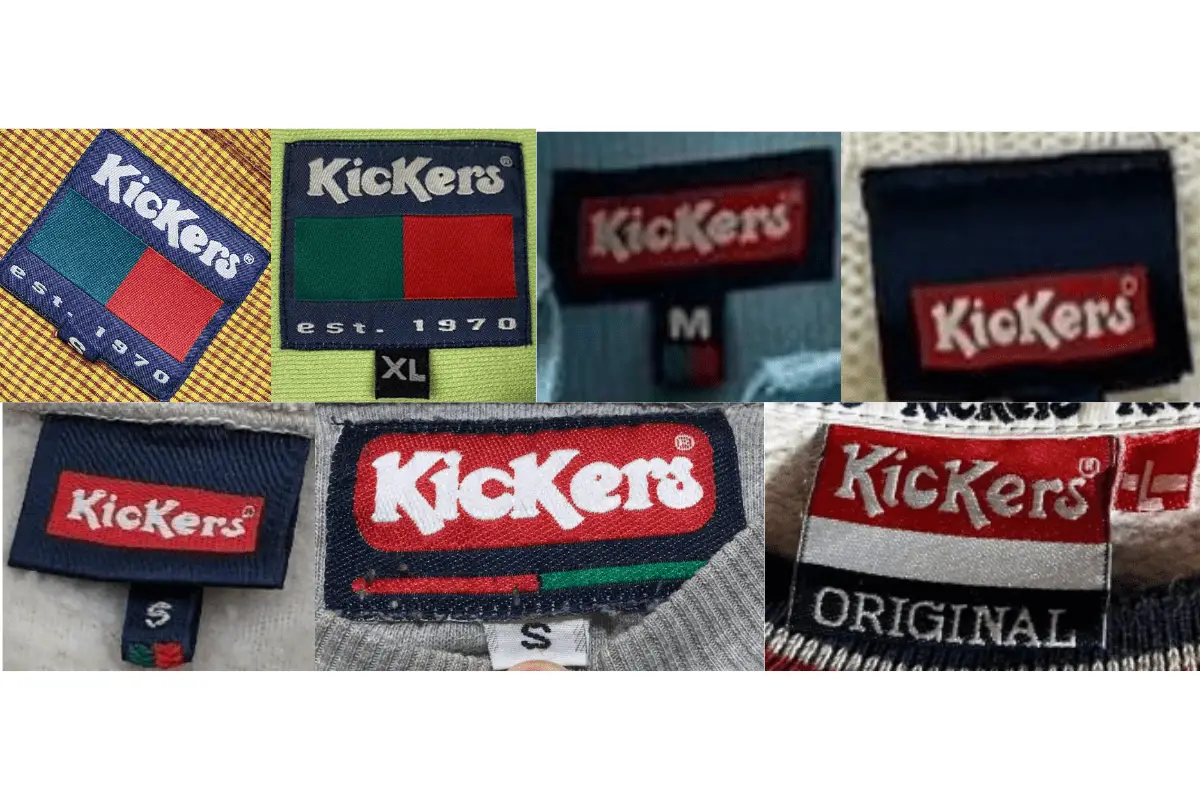
1990s Kickers tags
2000s vintage Kickers tags
- Maintains the bold “Kickers” logo but with a simpler color palette.
- Loop tags became more prevalent, often pairing “Kickers” with size indicators like “L” or “M.”
- The “Classics” series tags were introduced, featuring distinctive red and black stripes with the “Kickers” logo prominently displayed.

2000s Kickers tags
2010s vintage Kickers tags
- Further streamlined tags featuring the “Kickers” logo in monochrome or two-tone designs.
- More modern styling with size labels typically positioned directly beneath the main logo.
- The use of loop tags continued, while the “Classics” tags retained their distinctive stripe patterns.
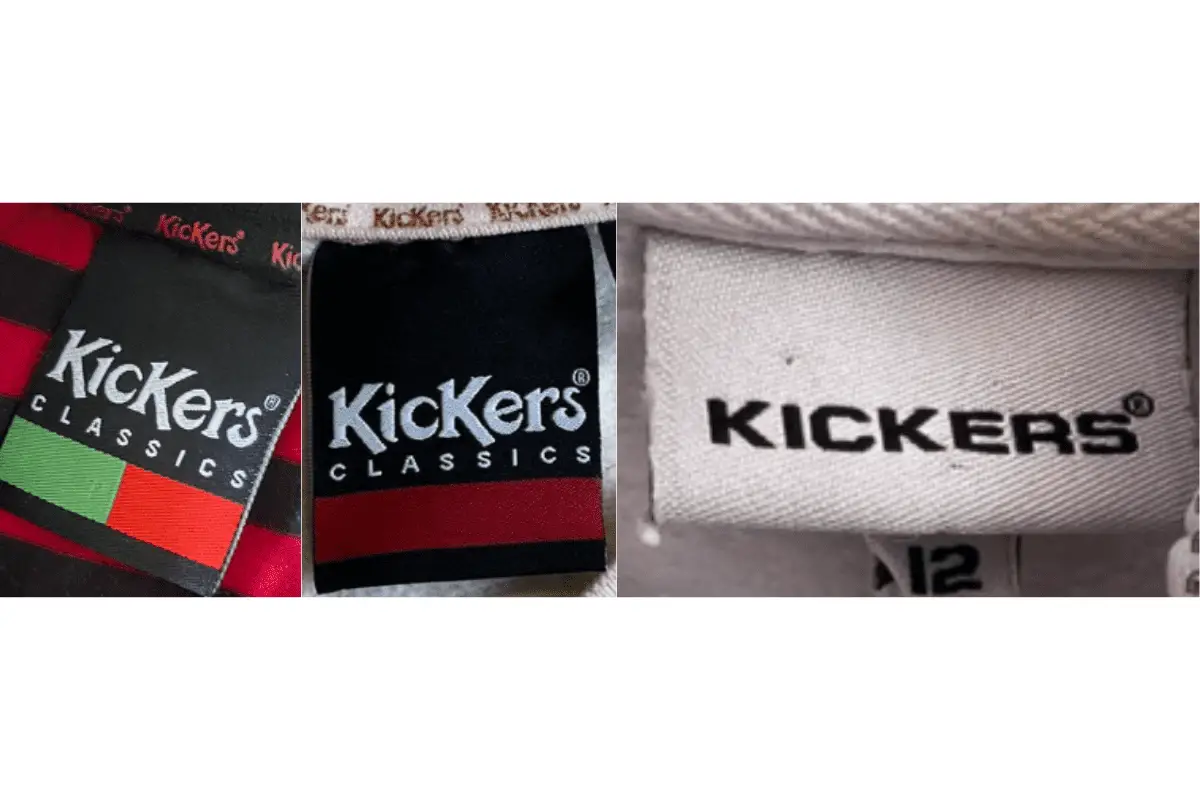
2010s Kickers tags
